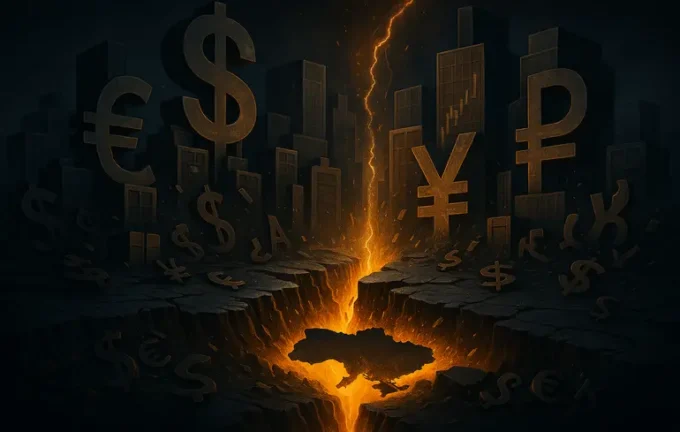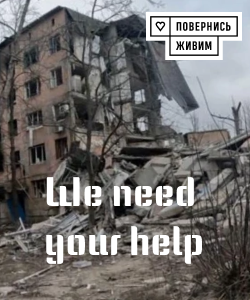Global Conflicts as Tectonic Shifts in the World Economy: Lessons for Ukraine in a Turbulent Era

In today’s world, global conflicts are no longer confined to military clashes or diplomatic exchanges.
They represent powerful tectonic shifts that fundamentally transform the global economy, dismantling established supply chains, redistributing capital, and most importantly, redefining humanity’s development paradigm.
Since 2017, as repeatedly warned by experts and public speakers, humanity has entered a turbulent period that signals an impending phase transition.
This means that military conflicts, localized lockdowns, regionalization, crises of global institutions, and economic downturns have become predictable features of this new reality.
For Ukraine, which finds itself at the epicenter of one of the most acute conflicts of modern times, understanding these transformations is not just an academic pursuit, but a matter of survival and future strategy.
Studying lessons from world wars shows how economies shifted priorities toward military-industrial sectors, with full resource mobilization and regulated consumption.
During WWII, for instance, the German Reich increased military spending from 22% to 52% by 1940, effectively militarizing its entire economy.
Funding came through drastic cuts in consumer needs and rationing, mirroring some Soviet practices but with distinct nuances.
Citizens of Germany and the USSR channeled their savings into state banks to sustain war efforts.
A key factor that helped maintain economic functions was strategic staffing, ensuring critical industries retained essential personnel—area where Ukraine must improve to safeguard vital expertise amid ongoing conflict.
Historical data indicates that during WWII, the economic potential of Britain and France surpassed Germany’s at war’s outbreak, despite the latter’s later mobilization.
This underscores that initial economic strength alone does not guarantee victory; adaptability and rapid reorientation are crucial.
The Cold War further demonstrated how military buildup spurred innovation—space exploration, nuclear energy, computing—all funded largely through military contracts.
It also led to the formation of rigid military-political blocks (NATO, Warsaw Pact), significantly influencing global trade and investments over decades.
Today, we witness a parallel process: the collapse of traditional international institutions such as the UN, WTO, G20, G7, which are proving ineffective in managing current crises.
Trust in these organizations falters amidst domestic political tensions, exemplified by leaders like Donald Trump actively undermining them.
As a result, the world seeks new alliances and cooperation formats, including cybergovernance and technological partnerships.
Geopolitical and economic fragmentation intensifies, prompting the formation of new military-economic alliances—an idea akin to the 'Great Diagonal'—a loose coalition of the UK, Poland, Ukraine, India, Australia, New Zealand, and Canada, with broader regional involvement.
Ukraine already participates in several security alliances and can serve as a cornerstone for a new global order where economic power and security intertwine.
Supply chains are being reconsidered, emphasizing localization and regional production.
The energy and resource crises deepen; volatile prices and climate-induced disruptions threaten food security—despite Ukraine’s resource-rich status, the country remains import-dependent, highlighting urgent need for change.
Financial instability, inflation, debt risks—already manifesting in Russia and Ukraine—accelerate the threat of stagflation, which is concerning given the ongoing conflict.
Ukraine's economy is on the brink of stagnation, with negative growth and rising societal anxiety, mistrust, and emigration.
A catastrophic skills deficit—averaging 32% across sectors—further hampers recovery.
Addressing demographic challenges and boosting labor participation are crucial.
Despite these hardships, Ukraine has an unprecedented opportunity to lead in technological innovation, especially in AI.
Its startups and gaming companies already occupy significant global niches.
The country can become a platform for experimentation and technological leadership, if strategic measures are taken.
The development of military-industrial complex—drones, missiles, robotic systems—must become the engine of economic revival.
To succeed, transparent procurement, international R&D partnerships, and export facilitation are essential, alongside maintaining flexibility and localized supply chains.
Mobilizing critical personnel and engaging women, veterans, and people with disabilities are vital steps.
Financial and tax incentives for frontline regions like Kharkiv, Zaporizhzhia, Dnipro, and Sumy will promote regional stability.
Society must shift from consumption to investment, redirecting funds into military bonds, government securities, and developing the stock market—avoiding creation of yet another exchange.
Ironically, war acts as a catalyst, forcing a deep restructuring of alliances, financial flows, and technological priorities.
Ukraine now stands at a critical juncture: the current trajectory does not guarantee victory.
But this crisis presents an opportunity to shift from mere survival to a breakthrough.
By leveraging unique advantages—adaptability of the military-industrial sector, AI potential, strategic geopolitical positioning, and willingness to experiment—Ukraine can shape a new global security architecture, where it is a proactive, influential participant.
Decisive and strategic action is needed now to shape our future.

